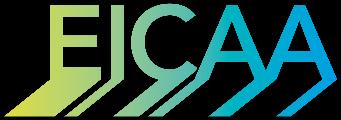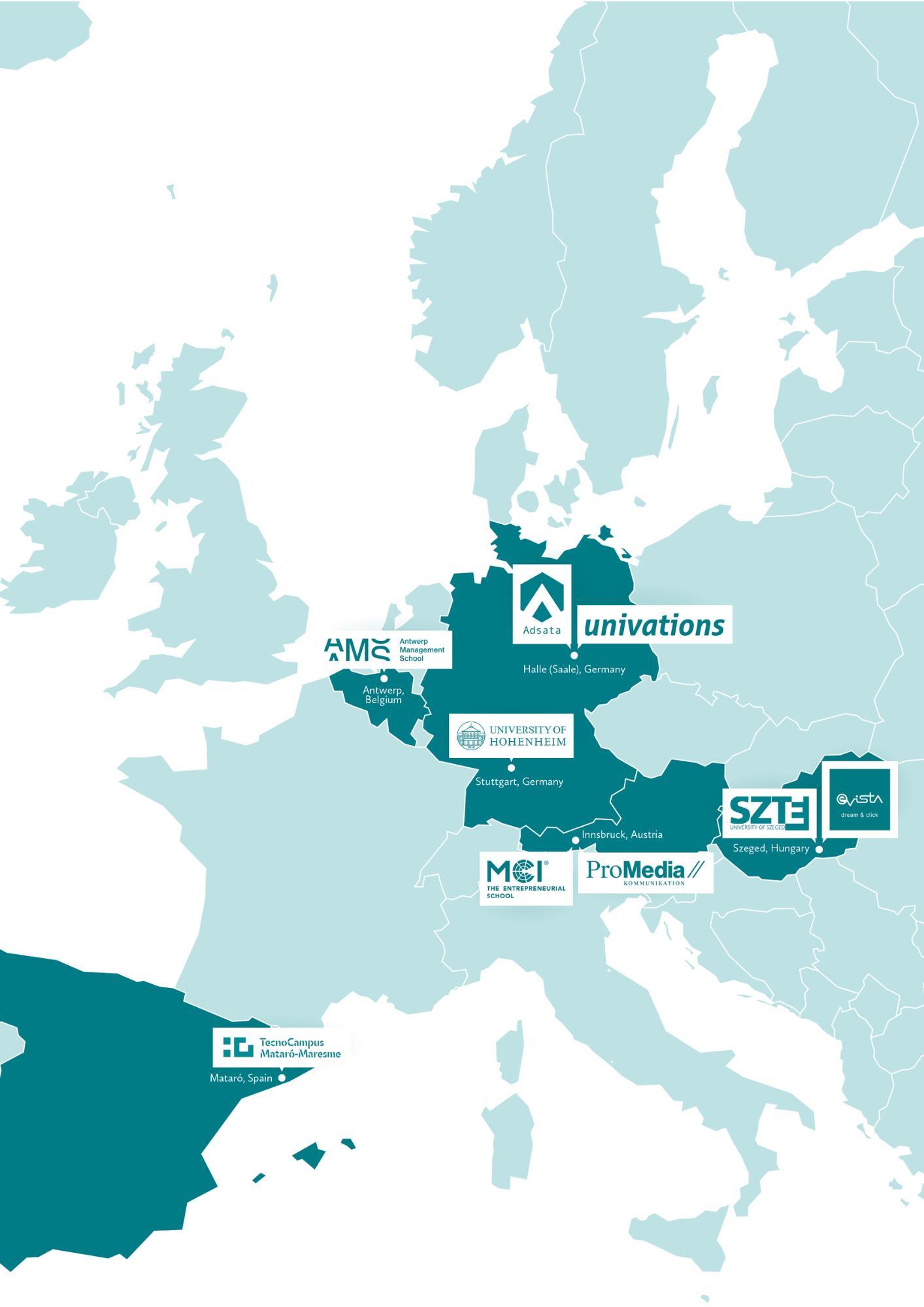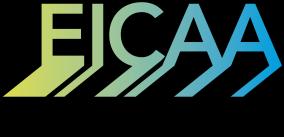3.EICAA-Competence Framework
3.1. Competence area “Ideas and Opportunities”
SPOTTING OPPORTUNITIES
Definitions:
• Opportunityrecognition: Abilityorcapacitytoperceivechangedconditionsand overlooked possibilities in the environment that represent potential sources of value to a venture.
Hint: Use your imagination, knowledge and abilities to identify opportunities for creating value.
Descriptors:
• Identify and monitor future trends.
• Identify challenges that need to be met.
• Identify and seize opportunities to create value by exploring the social, cultural and economic landscape.
• Establish new connections and bring together scattered elements of the landscape to create opportunities to create value.
THREAD FOUNDATIO N
Discover –Explore Relying on support from others
Analyse the context/Sca n the environmen t
Identify the environment and the different areas in which value can be created, and the factors that will be monitored.
I can identify the sources of information and continuousl y gather information
INTERMEDIAT E ExperimentDare Building independence
Identify the boundaries of the environment where value can be provided and are within my (or my team’s) reach. Identify opportunities where I (my team) can take a competitive advantage.
ADVANCED ImproveReinforce Taking responsibility
Monitor relevant trends. Interact with the environment to gather information to get feedback. Build knowledge based on these interactions.
EXPERT ExpandTransform Driving transformation, innovation and growth
Anticipate future trends.
Promote a culture within the organization that is open to spotting the weak signals of change, leading to new opportunities for creating value.
[intrapreneurshi p]

12
Identify, recognise challenges
Identify, create and seize opportunitie s
about the market environment.
Identify challenges that need solutions.
Redefine/refra me a challenge so that alternative opportunities may become apparent.
Challenge mainstream thought to create opportunities and look at challenges in different ways. Judge the right time in which a challenge can be tackled.
Interact with others to identify challenges.
Inspire and engage others to turn challenges into opportunities.
“Passive” process of seeing or recognizing an opportunity that someone else has spotted or has explained.
Engaging in an activeprocess of searching for opportunities, with systematic methods. Being aware and alert to the opportunities that might be existing in a given domain. Being aware of the factors that are conducive to opportunity exploitation.
Create opportunities that might not have existed or were not easily accessible/ recognisable to others. Using knowledge and prior experience (about markets, technological developments, economy, context…) to create opportunities.
[intrapreneurshi
p] Promote a culture of knowledge exchange across functional areas of the organization so that new opportunities emerge.
Design and engage into an iterative process of searchingidentifyingcreating-testing opportunities. Codiscover/cocreate opportunities through interactive processes with stakeholders (e.g., customers, technologies, colleagues, mentors, venture capitalists).
[intrapreneurshi
p] Develop an attitude of nonconformism necessary to question the status-quo to detect opportunities and dare to

13
pursue them in the context on an existing organization.I
DESIGN ORIENTATION
Definition:
• Abilitytointeractandimmersewithcustomers(andotherstakeholders)toidentify their needs and design an offer that satisfy the identified needs.
Hint:
• Focus your offer on the needs of the users.
Descriptors:
• Develop a user-oriented offer that provides value to customers.
• Immerse and engage with users and customers to understand their needs, problems and difficulties, from their perspective.
THREAD FOUNDATION
Discover –Explore Relying on support from others
Design focus
Immerse with your users
Explain what is design orientation and its key elements.
INTERMEDIATE Experiment-Dare Building independence
ADVANCED ImproveReinforce Taking responsibility
Explain the value of developing an user-oriented offer.
Explainthe differenttools and methodologies to immerse with the users to get insights of their needs and potential solutions (e.g., ethnography, design thinking methods…)
Participate in activities of immersion with the users. Empathise with them. Extract meaningful (and implicit) insights.
Design offers by focusing on the users’ needs, taking into account both the cognitive and emotional aspects of the users’ needs.
Design innovative andeffective strategies and tools for immersing with the users.
EXPERT ExpandTransform Driving transformation, innovation and growth
Promote a culture of userorientation in the organisation.
Turn users into collaborators and ambassadors

14
Identify needs
Segment the customers/users:
Identify the targetgroups related to a given challenge or opportunity.
Definitions:
Identify and analyse the differentand uniqueneeds that each target group is facing.
Producea roadmap which matches the needs with the actions needed to deal with them to create value.
CREATIVITY
Design projects which aim to anticipate futureneeds.
• Creativity istheabilitytodiscoverandcreateideasandopportunities;tocombine knowledge,experienceandpersonalresourcesfromdifferentareasinnewways;
• Innovativeness: the ability to look for novel ways of action.
Hint:
• Develop creative and purposeful ideas.
Descriptors:
• Develop ideas and opportunities to create value, including innovative solutions to new and existing challenges and/or improved solutions for already addressed challenges.
• Explore and experiment with innovative approaches.
• Combine knowledge and resources to achieve valuable effects. Thread as in
EntreCom
p
FOUNDATION
Discover –Explore Relying on support from others
INTERMEDIATE Experiment-Dare Building independence
ADVANCE D ImproveReinforce Taking responsibilit y
EXPERT
ExpandTransform Driving transformation, innovation and growth Act creatively /Be curious and open
Beopentonew experience and change. Imagine/envisi on different alternatives to existing problems and solutions.
Develop autonomy, freedom and independence to stay away from environmental (organisational) constraints. Develop a balance between being creative and imaginative and the orientation towards action.
Challenge the status quo.
Promote and lead disruptive change. Be a role model in the organisation by exerting influence on others.
Solve problems creatively/ Creative problem solving
Explore openended problems in different ways, by taking different
Relate problems to priori knowledge/experien ce.
Describe and develop different problemsolving
Help and inspire others to create value by encouraging experimentatio n and using

15
Generate ideas
perspectives and using prior knowledge and experience.
Reshape/redefine open-ended problems so that solutions become available.
Describe the process of idea generation, idea assessment and development. Explain the differences between divergence and convergence in idea generation, and the factors that play in each of the stages.
Connect unconnected ideas and knowledge to produce novel and appropriate or useful outcomes.
Use and experiment with different techniques of idea generation that provide effective solutions to problems, using available resources.
Nurture an open exchangeofideas, knowledge and opinions across different departments.
strategies to provide creative solutions to complex problems.
creative techniques to approach problems and generate solutions.
Set up processesto involve stakeholder s in finding, developing and testing ideas.
Design and develop processes within the organisation to nurture the creation of new and useful ideas through the dialogue among different functional departments and different agents within the organisation. Foster the creative culture. Allow for creative and innovation within the operational processes of the organisation.
[intrapreneursh ip context]
Creation of a creativity culture that sustains, supports and fosters creativity in the organization.
Be innovative
Identify examples of innovations that have
Describe how innovations diffuse in society, culture, and the market.
Strategy different innovations in the business
Manage and encourage innovation processes.

16
Definitions:
transformed society. Explain the difference between different types of innovations (incremental, breakthrough, or transformational).
model, product or service, and marketing; as well as digital innovations.
VISION
• “A projected mental image of what a leader wants to achieve” (Bass & Stogdill, 1990; cited in Baum & Locke, 2004).
• “Ideal and unique projected images of the future referring to strong values or an idea laden with emotion” (cf. Kirkpatrick & Locke, 1996; cited in Frese & Gielnik, 2014).
• “The means by which the leader’s goals are communicated in an inspirational fashion to followers, and the leader takes various actions intended to implement the vision (which provides a sensemaking component for followers).” (Cogliser & Brigham, 2004).
Hint:
• Work towards your vision of the future.
Descriptors:
• Imagine the future.
• Develop a vision to turn ideas into action.
• Visualise future scenarios to help guide effort and action.
Thread FOUNDATIO
N
Discover –Explore Relying on support from others
Imagine/ Build a vision for the new venture and oneself
I can imagine a desirable future
INTERMEDIAT E ExperimentDare Building independence
Imagine a desirable futurearound creatingvalue. Imagine myself as an entrepreneur.
ADVANCED ImproveReinforce Taking responsibility
Build future scenarios around my value creating activity and its growth.
EXPERT ExpandTransform Driving transformation, innovation and growth
Communicate thevision to different audiences to get supporters. [intrapreneurship ]
Communicate the vision to get commitment of the organization to innovation, opportunityfocus and self-

17
Think strategicall y
Guide action
Properly explainwhat avisionis and what purpose it serves.
Awareness of whatitis neededto builda vision.
Identify the guidelines to make my idea actionable.
See the big picture (being able to shift focus from the micro to the macro level)strategic zoom lens-
Prepare a vision statement to guide decision making.
renewing. Communicate the vision to foster corporate coherence.
I can plan backwards frommyvision to design the necessary strategy to achieve it.
Use the vision to guide my (my team’s) actions.
Draw people’s attention towards desired outcomes and thus, focus people’s efforts in turning vision into actions.
Monitor how the vision is deployed, identify the changes needed to achieve my vision. Promote initiatives for change and transformatio n that contribute to my vision.
Identify challenges related to the vision, while respecting the different levels of the system and the variety of stakeholders affected.
VALUING IDEAS
Definitions:
• Opportunity assessment: Ability to evaluate the content structure of opportunities to accurately determine their relative attractiveness (Morris et al, 2013).
• Valuing ideas refers to the “process of evaluating and selecting high quality opportunities and ideas and acting on them to provide value to others. It is relevant because it normally triggers the decision to start the new venture.” (Learned, 1992, cited in Shook et al., 2003).

18
• Claimingnovel ideas “is about managing different kinds of intellectual property issuessuchaspatenting,licensing,trademarking,branding,copyrights,andtrade secrets. Its main purpose is to allow for individuals and organisations to protect their intellectual creative outputs from unethical exploitation by others” (Lackéus et al., 2020).
Hint:
• Make the most of ideas and opportunities.
Descriptors:
• Judge what value is in social, cultural and economic terms.
• Recognise the potential an idea has for creating value and identify suitable ways of making the most out of it.
• Protect intellectual creative outputs.
Thread as in EntreComp
FOUNDATION
Discover –Explore Relying on support from others
Recognise thevalueof ideas
Identify ideas and opportunities thathavevalue for myself and others.
INTERMEDIATE ExperimentDare Building independence
ADVANCED ImproveReinforce Taking responsibility
Decideon which type of value to acton(economic value, influence value, harmony value, social value,enjoyment value) and then, choose the most appropriate pathway to do so.
Assess the value of an opportunity or idea, considering the different factors and stakeholders involved (expected rewards/outputs, risks and returns, available resources, competitors…). Find the right balance between the time spent in valuing ideas and moving fast to take competitive advantage.
EXPERT ExpandTransform Driving transformation, innovation and growth
Develop strategies to assess the value of ideas basedon datadriven processes and iterative assessment of the ideas with interaction with the environment and different stakeholders.
Share and protect ideas
Explain that ideas can be shared and protected by
Choose the most appropriate licence for the purpose of
Outline a dissemination and exploitation
Develop a strategy on intellectual property rights,

19
Definition:
different mechanisms. sharing and protecting the value created by my ideas.
plan with the involved partners.
considering the growth of the venture and geographic requirements.
ETHICAL AND SUSTAINABLE THINKING
• Ability to conduct oneself and the new venture at hand in a social and environmental conscious manner.
• Sustainability: “the possibility that humans and other life will flourish on earth forever. For human beings, flourishing comprises not only survival and maintenance of the species but also a sense of dignity and authenticity” (Ehrenfeld, 2005).
• Sustainability requires a holistic approach, which facilitates everyone to lead a better life, at the same time as being moderate in the use of the earth’s resources and renewing them where necessary (Farrell, 2018).
Hint:
• Assess the consequences and impact of ideas, opportunities and actions.
Descriptors:
• Assess the consequences of ideas that bring value and the effect of entrepreneurial action on the target community, the market, society and the environment.
• Reflect on how sustainable long-term social, cultural and economic goals are, and the course of action chosen.
• Act responsibly.
Thread as in EntreCo mp
Behave ethically
FOUNDATION
Discover – Explore Relying on support from others
INTERMEDIATE ExperimentDare Building independence
ADVANCED ImproveReinforce Taking responsibility
Describe the importance of ethicalbehaviour, and of adhering to principles and values.
Identify the ethical challenges that the new venture poses to the entrepreneur (or team) (e.g., focus on financial gain at the expense of others, actionoriented and few
Being driven by honesty and integrity in decision-making and act according ethical values related to the different activities of the new venture.
EXPERT ExpandTransform Driving transformatio n, innovation and growth
Take responsibilit y for promoting ethical behaviour in my area of influence.
Takeaction against

20
Think sustaina bly
Assess impact
List examples of environmental friendly behaviour that benefits a community. Identify practices that are not sustainable and their implications for the environment and compare them with examples of environmentally friendly behaviours.
time for reflection, entering instrumental relationships, promotion and bargaining and sales tactics…)
Produce a clear problem statement when faced with practices that are not sustainable.
[intrapreneurshi p]
High commitment to Corporate Social Responsibility.
Reflect on the overallimpact an organisation has on the environment (and vice versa).
Discuss the relationship between societyand technical developments, based on their implications for the environment
unethical behaviour.
Identify the impact of human action in social, cultural, environmental, or economic contexts.
Be accounta ble
I can explain the need to be accountable.
Identify all the stakeholders who are affected by the valuecreating activity, including stakeholders who cannot speak up (future generations, climate or nature).
Tell the difference between input, output, outcomesand impact. Choose or develop “measure indicators” to monitor and assess the impact of the value-creating activity.
Choose adequate methods for analysing environment alimpact based on their advantages and disadvantage s.
Effectively contribute to selfregulation discussions within my area of proficiency.
Carry out impact assessment, impact monitoring, and impact evaluationincluding environmenta l impact- on my valuecreating activity.
I can tell the difference between accountingfor useof resources and
I can discuss a range of accountability methods for both functional
I can use the accountabili tymethods that hold me responsible to our

21
accountingfor theimpact of my valuecreating activity on stakeholders and the environment.
and strategic accountability.
internal and external stakeholders.
I can design ways tobe accountable toallofour stakeholder s.
3.2. Competence area “Resources”
SELF-AWARENESS AND SELF-EFFICACY
Definitions:
• Self-efficacy: the individuals’ conscious belief in their own ability to bring about desired results in the performance of a particular task (Bandura, 1997)
• Entrepreneurial Self-Efficacy: specific form of self-efficacy, in which the individuals believe they are capable of performing the tasks associated with the new-venture management.
• Cognitive bias are cognitive mechanisms that assist people in fast decision making (Busenitz & Barney, 1997). They have a positive function in helping entrepreneurs take decisions without putting too much strain on their time and cognitiveresourcesandthustostayactionableinspiteofhighcognitivedemands on uncertain situations. However, they may also lead to errors because people make less rational decisions and discount available information (Frese & Gielnik, 2014). One such cognitive biases in entrepreneurs might be overoptimism or overconfidence.
• Overconfidence: entrepreneurs’ overestimation of their abilities, in particular withregardtomakingaccurateforecasts,havinghigherabilitiesrelativetoothers, and becoming successful (Koellinger et al., 2007; cited in Frese & Gielnik, 2014).
• Overoptimism (or optimistic bias): entrepreneurs’ tendency to expect positive outcomes or to perceive heightened chances of success (Baron et al., 2012, Cooper et al., 1988; cited in Frese & Gielnik, 2014).
Hint:
• Believe in yourself and keep developing.
Descriptors:
• Reflect on your needs, aspirations and wants in the short, medium and long term
• Identify and assess your individual and group strengths and weaknesses
• Believe in your ability to influence the course of events, despite uncertainty, setbacks and temporary failures Thread in

22
EICAA-CF FOUNDATIO N Discover –Explore INTERMEDIAT E ExperimentDare Building independence ADVANCED ImproveReinforce Taking responsibility EXPERT ExpandTransform Driving transformation
Follow your aspirations
Identify your strengths and weaknesseS
Relying on support from others
Identify my needs, wants, interests and goals.
Committo actions fulfilling my needs, wants, interests and goals. Reflect on my individual and group needs, wants, interests and aspirations in relation to opportunities and future prospects.
Identify strengths and weaknesses, with respect to the new venture. (contextsituated)
Translate my needs, wants, interests and aspirations into goals that help me reach them.
, innovation and growth
I can help others to reflect on their needs, wants, interests and aspirations and how they can turn these into goals
Believe in your ability Believein one’s ability to accomplish the tasks that are intended by oneself or asked by others in relation to the
Develop justifiedselfconfidence: Engage in a dynamic processof judging one’s abilities, based on past experiences and perceived competence, and the interaction with the environment (e.g., with stakeholders, the market, businessrelated activities…)
Believe in own’s control ofsuccessand failures and judge them compared with control from outside influences.
Based on the strengths and weaknesses identified, be able to prioritise basedonthe strengths, anddevelop the weaknesses, by searching training and support, if needed, to develop oneself and make the most of opportunities to create value.
Believe in oneself despite the difficulties.
Optimism: Believe that events will generally result in
I can teamup withothers to compensate for our weaknesses and add to our strengths. Helpothers in their own development. Metaevaluationof potential cognitive biases in overconfidenc e or overoptimism.
Learning fromfailure: Judge failures as opportunities to learn and take the good out of these experiences.

23
Shape your future/Develo p the necessary skills
new venture (ESE).
Describe which qualities and abilities are needed for different jobs, and which of these qualities and abilities I have.
(Locus of control) favourable outcomes.
Describemy skills and competences relating to career options, including selfemployment. Use my skills and competences to change my career path, as a result of new opportu-nities or from necessity.
Discuss with others to get a realistic understandin gand evaluationof mypersonal attitudes, skills and knowledge can influence my decisionmaking, relationships with other people and quality of life.
Design professional development strategiesfor myteamand organisation based on a clear understanding our strengths and weaknesses, in relation to both current and future opportunities to create value.
Design strategies to overcome my (or my team’s or organisation’s) weaknesses and to develop our strengths in anticipating future needs.
MOTIVATION AND PERSEVERANCE
Definitions:
• Passion: consciously accessible, intense positive feelings experienced by engagement in entrepreneurial activities associated with roles that are meaningful and salient to the self-identify of the entrepreneur (Cardon et al., 2009).
• Consistencyofinterest: abilitytostayfocusedandpassionateoveralongperiod of time by performing particular task without changing interest or goals (Salisu et al., 2020; cited in Martínez-Martínez & Ventura, 2020).
• Perseverance: Abilitytosustaingoal-directedactionandenergywhenconfronting difficulties and obstacles that impede goal achievement (Morris et al., 2013).
• Ability to persevere and sustain efforts to achieve intended objectives even when hardships or setbacks occur. Along with consistency of interest, it is part of the

24
construct named grit, which is related to the achievement of long-term objectives. (Martínez-Martínez & Ventura, 2020).
• Resilience: ability to cope with stresses and disturbances such that one remains well, recovers or even thrives in the face of adversity (Gianesini et al., 2018)
• Abilitytoadapttoenvironmentalchangesinsituationsofthreat,adversity,tragedy, trauma, or stress whilst maintaining a positive mindset (Salisu et al, 2020; cited in Martínez-Martínez & Ventura, 2020).
• Commitment: entrepreneur’s drive to move ahead with the business; willing to work hard (Frasté & Van Gils, 2007). Going forward with perseverance and tenancy notwithstanding uncertain situations (Lee et al., 2016).
Hint:
• Stay focused and don't give up.
Descriptors:
• Be determined to turn ideas into action and satisfy your need to achieve.
• Be prepared to be patient and keep trying to achieve your long-term individual or group aims.
• Be resilient under pressure, adversity, and temporary failure. Thread in EICAACF FOUNDATIO
N
Discover –Explore Relying on support from others
Maintain focus (consistency of interest)
Stay motivated and passionate
Identifya givenfocus to pursue related to my valuecreating activity.
INTERMEDIA TE ExperimentDare Building independence
Stayfocused on a task until completion and avoid distractions.
ADVANCED ImproveReinforce Taking responsibility
Don’t lose focus on other interests. Only change the course of a project after thorough evaluation. Maintain focus for long periods of time in relation to my valuecreating activity.
EXPERT ExpandTransform Driving transformatio n, innovation and growth
Encourage others to build a strategic plan of action for career advancement
Recognise ways of motivating myself and others.
Visualise the achievement of the goals to keep motivation and focus
Use strategies to stay motivated (e.g., set goals, monitor performance, monitor progress, celebrate
Develop strategies to keep my team motivated.

25
Persevere/Tenaci ty/
Don’t give uP Willingto workhard and invest effort to achieve the goals.
achievements …)
Delay achieving goals to gain greater value, thanks to prolonged effort.
Be resilient I am determined and persevere when trying to achieve my (or my team's) goals.
Overcome simple adverse circumstances. Manage moderate levels of pressure effectively.
Maintain effort and interest towards goals, despite adversities. Setbacks don’t discourage me.
Endureand cope with adverse circumstances. Design strategies to overcome difficult circumstances. Stay emotionally well despite the difficulties.
ENTERPRISING LITERACY
Inspire othersto workhard ontheir goals by showing passion and a strong sense of ownership.
Helpothers develop resilience. Maintain a positive ambience within my team or organisation in difficult situations.
Definitions:
• Enterprisingliteracy: knowledge about the business functions and processes to develop the value creating activity efficiently.
Hint:
• Develop financial, economic and enterprising know-how.
Descriptors:
• Understand economic and financial concepts.
• Build marketing and sales strategies.
• Apply enterprising knowledge to take informed business decisions in the new venture, and as the new venture grows.
• Set up the proper legal entity for the new venture.
• Take business decisions based on understanding and knowledge of key business functions.
Thread FOUNDATION Discover –Explore
INTERMEDIATE ExperimentDare Building independence
ADVANCED ImproveReinforce Taking responsibility
EXPERT Expand-Transform Driving transformation,

26
Understand economic and financial concepts
Relying on support from others
Explain simple economic concepts (for example, supply and demand, market price, trade, opportunity cost, comparative advantage).
Understand marketing & sales concepts
Explain simple marketing& sales concepts
Be able to read andanalyse income statements, cash flow, profitand-loss accounts, balance sheets, explain their purpose and differences.
Feel comfortable managing financial and business ratios (for example, return on investment, return on equity, burnt rate…)
Perform market analysisand competitors analysis and identify key elements and differentiators of the offer.
Develop marketing andsales strategies to acquire, retain, refer and activate customers.
innovation and growth
Use financial ratios to assess the financial health of my valuecreating activity and compare it with that of competitors.
Enterprising literacy Explain other conceptsof keybusiness functions like strategic planning, operations, product development, organisational structure, recruiting, and structuring business deals.
Technicallegal aspects
Explain that the value-creating activities can take different forms (a business, a social enterprise, a non-profit organisation and so on)
Takekey business decisions based on my in-depth knowledge of enterprise functions like marketing, sales, strategic planning, and others.
Adapt the marketingand salesstrategies tothegrowth of the new venture to keep providing value to the customers, while differentiating from the existing offer.
Share my knowledge and make all employeesmore literate entrepreneurially
Explain simple conceptsof technicallegal aspects
Explain that the value creating activity can be established under different
Manage the necessary steps for the legal constitution
Manage the technical-legal aspectsofthe newventure with venture growth

27
Definitions:
of a new venture. structuresof ownership (individual company, limited company, cooperative and so on) and associated processess (i.e., partners agreement).
ofthenew venture. (i.e., exit plans, acquisitions, etc).
MOBILISING OTHERS
• Mobilisingothers refers the ability to involve others in the entrepreneurial project (stakeholders) in a way that generates participation and adherence to the initiative. This term is associated with interpersonal skills (Hood and Young, 1993; Vesper & McMullan, 1988; cited in Mitchelmore & Rowley, 2010) which are defined as a set of habits and behaviours aimed at achieving the necessary interaction for the development of the venture.
• Persuasion: Persuasion means the communicating behaviours that a message sender performs to influence a message receiver’s attitude by language or nonlanguage manners (Dillard & Pfau, 2002). It consists of convincing others about the value of ideas and opportunities and that they exist/can be created (Dorado, 2005).
• Negotiation: process of joint decision making. It is communication, direct or tacit, between individuals who are trying to forge an agreement for mutual benefit (Peyton Young, 1991).
• Interpersonalskills: those that involve customers and other stakeholders in the process of finding the solution to an opportunity, and this goes beyond the simple commercial interaction with clients (Lackéus et al., 2020).
Hint:
• Inspire, enthuse and get others on board
Descriptors:
• Inspire and enthuse relevant stakeholders
• Get the support needed to achieve valuable outcomes
• Demonstrate effective communication, persuasion, negotiation and leadership.
Thread FOUNDATION
Discover –Explore
Relying on support from others
INTERMEDIAT E ExperimentDare Building independence
ADVANCED ImproveReinforce Taking responsibility
EXPERT ExpandTransform Driving transformation, innovation and growth

28
Inspire and get inspired
Getinspired by role models and success cases, and learn from these cases what is relevant to my circumstances.
Persuade and negotiate
Persuade others by providing arguments and evidence for these arguments.
Communicat e effectively Explain the main metrics for effective communication.
Inspire others by example or by showing the way forward.
Inspire others, even in adverse, uncertain or challenging circumstances
Maintain momentum with my team, partners and stakeholders along extended periods of time, even when the going gets tough.
Persuade others by appealing to theiremotions.
Create a call to action and get stakeholders on board.
Prepare and develop a good negotiation strategy (following ethical rules for negotiation; e.g., without manipulation nor coercion).
I can communicate my ideas clearly to others, to different audiences with simplicity and elegance.
Communicate imaginative design solutions.
Communicat e my ideas clearly to others in written and oralforms,ina variety of ways(posters, videos, roleplays) and types of presentations (pitches, pep talks, formal or informal presentations) Build narratives and stories that provide meaning and motivate, persuade and inspire.
Take the lead of the social conversation in the community that my idea is targeted at via high impact channels (press, trade journals, conferences, community platforms…)

29
Use media effectively Provide examples of inspiring communicatio n campaigns and learn from them.
Use of social media appropriately, with awareness of my audience and purpose.
Design effective social-media campaigns to mobilise people in relation to my (my team’s) value-creating activity.
DIGITAL COMPETENCE
Effectively design communicatio n strategies to mobilize people in relation to my value- creating activity.
Definitions:
• Digital competence involves the confident, critical and responsible use of, and engagement with, digital technologies for learning, at work, and for participation in society.Itincludesinformationanddataliteracy,communicationandcollaboration, media literacy, digital content creation (including programming), safety (including digital well-being and competences related to cybersecurity), intellectual property related questions, problem solving and critical thinking.
Hint:
• Manage and use the digital technologies necessary for the new venture.
Descriptors:
• Use digital technologies necessary at work and linked to the entrepreneurial activity.
• Identify, collect, and analyse data that is relevant for the activity.
• Beawareofthethreadsofprivacyandsafetyandforeseeprocessestoprotectthe activity.
Threadin EICAA-CF FOUNDATION Discover –Explore Relying on support from others
General digital competences at work
I can identify thekeydigital competences required for a task.
INTERMEDIATE ExperimentDare Building independence
ADVANCED ImproveReinforce Taking responsibility
Useofgeneral digitaltools for work, collaboration, and digital content creation.
Develop a critical capacity on the use of technologies for an entire project or team.
EXPERT ExpandTransform Driving transformation, innovation and growth
Setupan architecture of digital tools to efficiently organise work and collaboration for a multidisciplinary team and guide them on how to use their intended digital tools for work.

30
Digital competences for the new venture
Knowledge of digitaltools relatedtothe newventure.
Information and data literacy
Search information in valuable sources and evaluate the quality of these sources.
Useofdigital tools (e.g., CRM, web analytics, marketing, financial analysis…) for manage day-today operations efficiently.
Use of the basicsofdata analytics: collection of data and basic analytic tools (e.g., spreadsheets).
Digital tools that support creativity and innovation.
Get data analytics insights and build reporting (written and in visual form) appropriate for a specific goal or audience.
Use of digital tools that supportnew venture’s growth (e.g., cloud…)
Safety & cybersecurity Privacy management
Handle with discretion all personal information shared online to protect one’s and others’ privacy.
Safety and cibersecurity
Implement strategies for dataprivacy principles (own’s and other’s data, such as personal data on customers, stakeholders, etc.).
Identifyand counter threats to our digital safety and become less vulnerable to cyberattacks.
Generate, process, analyse, present meaningfulinformation fromdata and develop, use, and apply artificial intelligence (AI) and related algorithmic tools and strategies in order to guide informed, optimized, and contextually relevant decisionmaking processes.
Recognize, plan, and implement organizational cybersecurity defences.

31
3.3. Competence area “Into action”
TAKINGTHEINITIATIVE
Definitions:
• Takeresponsibility: assuming responsibility on a given task (“I am in charge of…”).
• Accountability: Someone who is accountable is completely responsible for what they do and must be able to give a satisfactory reason for it (Cambridge dictionary: “I am accountable for the outcomes of a given activity”)
• Independence refers to the ability to decide and determine for oneself what to do.
• Needofautonomy: Represents one’s strive to be independent and having control. Avoiding restrictions, rules, procedures and strong need for independence and autonomy (Moriano & Gorgievski, 2007, p. 88).
• Proactivity: Proactive disposition is a tendency to initiate and maintain actions that directly alter the surrounding environment (Bateman & Crant, 1993).
• Self-starting: the impetus for action coming from the entrepreneur him- or herself; the entrepreneur’s actions are less driven by other people or immediate external demands (Frese & Gielnik, 2014).
Hint:
• Go for it.
Descriptors:
• Initiate processes that create value.
• Take up challenges.
• Act and work independently to achieve goals, stick to intentions and carry out planned tasks.
Thread FOUNDATIO
N
Discover –Explore Relying on support from others
Take responsibility
Carry out the tasks I am given responsibly and in shared activities.
INTERMEDIAT E ExperimentDare Building independence
Take individual and group responsibility in valuecreating activities. Take responsibility in seizing new opportunities andwhenfacing unprecedented challenges while implementing
ADVANCED ImproveReinforce Taking responsibility
Delegate appropriately and provide context and training to ensure quality work.
EXPERT ExpandTransform Driving transformation, innovation and growth
Encourage others to take responsibility in value-creating activities.

32
Work independentl y
“I can work alone”
Show independenc e in carryout out simple value-creating tasks.
my business idea.
Take action Show initiative in dealing with initiatives that alter the surrounding environment.
I can initiate simple valuecreating activities.
I can initiate valuecreating activities that involve contribution s from others.
Praise initiative taken by others and reward it appropriately within my team and organisation.
[intrapreneurshi p]
Strive to work with autonomy and independence beyond the organisational constraints, and if necessary, avoid restrictions or procedures to pursue opportunities in the organisation.
Actively face challenges, solve problems, and seize opportunities to create value.
Initiate action (impetus for action) on new ideas and opportunities, which will add value to a new or existing valuecreating venture.
Encourage others to take the initiative in solvingproblems and creating value within my team and organisation.

33
Definitions:
PLANNING AND MANAGEMENT
• Planningandmanagement: it refers to the set of skills to organise the resources (material, human, financial, technological or knowledge) associated with business action.
Hint: Prioritise, organise and follow up.
Descriptors:
• Set long-, medium- and short-term goals.
• Define priorities and action plans.
• Adapt to unforeseen Thread FOUNDATION
Discover –Explore Relying on support from others
INTERMEDIATE ExperimentDare Building independence
ADVANCED ImproveReinforce
Taking responsibility
Define goals (own’s goals and goals related to the value-creating activity).
Be able to define clear and achievable goals related to a simple value-creating activity.
Be able to set short-term goals I can act on.
Be able to define short-term, midterm and longterm goals according to the vision of my (or my team's) valuecreating activity. (intrapreneurship) I can adapt goals according to the planned available resources in the company.
EXPERT ExpandTransfor m Driving transfor mation, innovatio n and growth
Manage the need for creativit y and the need for control so that my organisat ion’s capacity to achieve its goals is protected and nurtured.
Plan and organise conscientiously.
Carry out a simple plan for valuecreating activities.
Create an actionplanwith the different steps to achieve my goals.
Apply the basics of project management in managing a value-creating activity.
Design manager ial procedu res to effectivel y deliver value in challengi

34
Define priorities Able to explain the difference between urgent and important goals when stating the priority of given tasks.
Able to set my own priorities and define and prioritise the tasks accordingly.
Able to prioritise the relevant steps according to the valuecreating activity (new venture).
ng circumst ances, adapting to changes where necessar y.
Define the priorities in complex and uncertain circumst ances, with partial or ambiguo us informati on, to achieve the goals and vision of the new venture.
(new venture)
Make the most of your time.
(Time management)
Value time (mine and the others’) as a scarce and valuable resource
Manage my time (and the others’) effectively using techniques and tools to be productive.
Help others managetheirtime efficiently.
Develop effective timemanage ment techniqu es that meet the specific needs of valuecreating activity.
Define and develop sustainable business plans.
Explain the elements of a business model (competitors’
Define a business model that has all the elements to deliver the
Develop a business plan based on the model, describing how to achieve
Keepand business model and business

35
Definitions:
analysis, marketing plan, operations, etc.) and know the templates to define one.
value I have identified: identification of users, value provided, competitors’ analysis, strategic partnerships, etc.
the value identified with aspects such as marketing plans, operations, finance plan, etc.
Be aware of the elements of the business plan to convince different stakeholders (investors, banks, clients) and can curate those based on the need and audience.
plan updated; Adapt to changes in the market or the technolo gytoface new challeng es and unexpect ed outcome and mobilise others for buying into opportuni ties arising from them.
PROCESS MANAGEMENT
• Transitionmanagement: ability to manage the transitions from the creation to the growth of the new venture, e.g., role transitions of the entrepreneur (skills adaptation and identity change) and role transitions of the members of the teams.
• Redirectionpower: entrepreneurs’ agency over the entrepreneurial process, especially in relation to new information, failures and surprises (Mansoori & Lackéus, 2020).
Hint:
• Descriptors:
• Establish mechanisms to monitor progress of the new venture.
• Adapt to changes and be able to decide whether to persevere or redirect the strategy.
• Manage transitions of the new venture.
• Work agile to adapt to changes of the new venture.
Thread FOUNDATION
Discover –Explore Relying on support from others
INTERMEDIATE ExperimentDare Building independence
ADVANCED ImproveReinforce Taking responsibility
EXPERT ExpandTransform Driving transformation,

36
Monitor progress Monitormy ownprogress in a task in an objective way. Understand the difference between time invested and progress made towards the achievement of a given goal.
Be flexible and adapt to changes.
Be open to changes. Confront and deal with changes in a constructive way.
Set measurable indicators that are relevant to monitor the progress of my value-creating activity.
Change my plans to achieve goals in light of changes that are outside my control.
Define and implement systematic datacollection procedures to measure the defined indicators to monitor how effective my value-creating activities are.
Be able to accept change as a fundamental element of the value-creating activity. Anticipate and include change along the valuecreating process.
innovation and growth
Able to make sense of data in relation to the measurable indicators and extract meaningful insights that inform about the progress made on the creating-value activity.
When changes present themselves, I am able to either capture the opportunity in it, mitigating negative impacts, or know when not to adapt.
Redirect your strategy
Understand the importance of making changes to the new venture according to the learning acquired along the process in information gathering activities.
Understand the need to be able to assertively follow through on my chosen strategy at times, and may need to be receptive of other stakeholders’ expectations at other times.
Be able to accept new directions of the value creating activity as new stakeholders get on board of the value creating activity (effectuation).
Redirection power: Revise the assumptions of the newventure based on information gathered from repeated testing. Be able to balance the need of persevere versus the need of changing the orientation of the valuecreating idea
Help my team members

37
cycle of a new
to use and develop Able to manage the role
Manage transitions Explainthelife
Able
Ownership of the process
venture and the different transitionsinmy role and my team members’ role, as well as the different competences that are requiredineach phase.
different competences as they are required along the different phases of the new venture.
transitions of myself (and my team’s) as the new venture develops. Identify the need for training, mentoring or coaching to manage the transition betweenrolesto effectively manage the new venture and achieve the intended goals.
transition through their respective rolesinrelation to the different requirements of the new venture and to the others’ role transitions.
Be aware of the expectationsof different stakeholders at each stage of the business life-cycle.
Work agile Explain the difference between classical management and agile management methodologies. Explain the basics of agile management of work: small increments, fast cycles, etc.
Use agile methodologies to work in short cycles and get feedback from stakeholders thathelpvalidate the value creating idea along the process.
Design agile methodologies that are appropriate to new challenges in the venture’s development.
Be able to balance the need for analysis and the need for quick decision making and quick action to respond fast to the changes of the environment.
COPING WITH UNCERTAINTY, AMBIGUITY AND RISK
Definitions:
• Uncertainty refers to the perception that is given by the impossibility of assigning a probability to an event (Hoskisson & Busenitz, 2002).
• Risk corresponds to situations where the decision-maker can draw the distributions of the outcomes of a set of events, whereas uncertainty refers to situations where it is impossible to estimate objective probabilities to the outcomes of events or it is even impossible to predict whether these events will occur. (Knight, 1921). In economics, risk is defined as a measure of the probability that an investment will offer a different return than expected. Risk is therefore an estimation while uncertainty is a perception.
• Tolerance ofambiguity: describes one’s ability to make decision with incomplete information. Making decision in the situation of high uncertainty (Moriano & Gorgievski, 2007, p. 88).
Hint: Make decisions dealing with uncertainty, ambiguity and risk.

38
Descriptors:
• Make decisions when the result of that decision is uncertain, when the information available is partial or ambiguous, or when there is a risk of unintended outcomes.
• Within the value-creating process, include structured ways of testing ideas and proto-types from the early stages, to reduce risks of failing.
• Handle fast-moving situations promptly and flexibly.
Thread FOUNDATION
Discover –
Explore Relying on support from others
Cope with uncertainty and ambiguity.
Not afraid of making mistakes while trying new things.
Explore my own ways to achieve things.
INTERMEDIATE ExperimentDare Building independence
Be able to discuss the role that information plays in reducing uncertainty, ambiguity and risk.
I can actively look for, compare and contrast different sources of information that help me reduce ambiguity, uncertainty, and risks in making decisions.
ADVANCED ImproveReinforce Taking responsibility
Find ways of making decisions when the information is incomplete.
Pull together different viewpoints to take informed decisions when the degree of uncertainty is high
EXPERT ExpandTransform Driving transformation, innovation and growth
Make decisions evaluating the different elements in a situation that is uncertain and ambiguous.
Set up appropriate strategies for collecting and monitoring data, which help me take decisions based on sound evidence.
Calculate risk. Identify examples of risks in my surroundings.
Describe risks related to a simple valuecreating activity in which I take part.
tellthedifference between acceptable and unacceptable risks
Weigh up the risks and benefits of selfemployment with alternative career options, and make choices that
Apply the concept of affordable losses to make decisions when creating value. Compare value-creating activities based on a risk assessment.
Assess the risks my venture is exposed to as conditions change.
Evaluate highrisklong-term investments using a structured approach.

39
Manage risk
Definition:
Identify and describe current and potential risks and ways to manage them.
reflect my preferences.
Critically evaluate the risks associated with an idea that creates value, taking into account a variety of factors. Critically evaluate the risks related to the formal set-up of a valuecreating venture in the area in which I work.
Demonstrate that I can make decisions by weighing up both the risks and the expected benefits of a value-creating activity.
Outline a risk management plan forguiding my (or my team's) choices while developing my value-creating activity.
Use strategies to reduce the risksthatmay arise during the valuecreating process.
Come up with strategies to reduce the risk of my value-creating initiative becoming obsolete.
DESIGN VALIDATION AND CO-CREATION
• Implementing strategies to prototype, test and experiment with the users, including strategies to include the users in the design processes (users as cocreators).
Hint:
• Co-create, prototype and test with the users.
Descriptors:
• Design prototypes that contain the essential functions of the offer.
• Test and experiment with users.
• Co-create with users, customers and other stakeholders.
THREAD FOUNDATION
Discover –Explore Relying on support from others
Prototype Explain the valueof prototyping to test the value of the ideas.
INTERMEDIATE Experiment-Dare Building independence
Identify the basicfunctions thataprototype should have to illustrate the
ADVANCED ImproveReinforce Taking responsibility
Developand delivervalue instages, launching with the core features of my
EXPERT ExpandTransform Driving transformation, innovation and growth
Design effective processesof interaction withusers, prototyping

40
value of the idea.
Experiment and test Understand the mechanisms oftesting hypotheses and assumptions related to the new venture (e.g., regarding the need identified, the target value, the designed idea…).
Co-create Explainthe valueofcocreation to different stakeholders.
Understand the difference between empathising withusers (e.g.,design thinking)and co-creation with users.
Identify key assumptions of the valuecreating idea that need to be tested and refined along the value-creating process.
(or my team’s) idea and progressively adding more (e.g., MVP).
Design repeated “experiments” ortests to gather relevant information that check and revise the assumptions in any aspect of the new venture (customers, needs, value provided..).
Facilitate cocreation processes with end-users and other stakeholders to design and test products and services that satisfy their needs.
Identify insights from co-creation sessions that are meaningful to the design of value.
Design cocreation processes, by identifying the target groups participating in the process, the goals of the co-creation, and the deployment of co-creation in several sessions and activities per session. Keep participants motivatedand engaged in cocreation processes.
andtesting based on the experience gathered during these processes.
Use effective strategies to evaluate resultsof experiments, accept or reject hypotheses, and if necessary, test and make a new hypothesis.
Reflect on cocreation processes and learn from it. Helpimprove the capabilitiesof stakeholders andusers in contributing to the co-creation process.

41
Definitions:
WORKING WITH OTHERS
• Humancompetence is the ability to work with, understand, and motivate other people, both individually and in groups (Pavett & Lau 1983; cited in Chandler & Jansen, 1992).
• Entrepreneurialteam: group of entrepreneurs with a common goal which can only be achieved by appropriate combinations of individual entrepreneurial actions (Harper, 2008).
• Leadership in entrepreneurship refers to the ability to influenceothers to strategically manage resources so that the best problem-solution fit is achieved in the search for the opportunity and the best supply-demand match is reached in the search of a competitive advantage (Covin & Slevin, 2002; cited in Ireland et al., 2003).
• Entrepreneurialbonding: creation and restructuring of relationships; creation of emotionally positive instrumental relationships with partners, employees and family members; managing the transitions in these relationships (Bird 1995/2019).
• The networkingcompetence is defined as “the ability of entrepreneurs to develop and maintain long-term relationships with customers, suppliers, and other interested stakeholders” (Sajilan & Tehseen, 2019: p. 192; cited in Mejri & Zouaoui, 2020).
• Buildingandusingnetworks: social interaction skills that enable an individual to establish, develop, and maintain sets of relationships with others who assist them in advancing their work or career (Gianesini et al., 2018).
Hint:
• Team up, work together, and network.
Descriptors:
• Work together and cooperate with others to develop ideas and turn them into action.
• Network.
• Solve conflicts and face up to competition positively when necessary.
• Manage instrumental relationships.
Thread FOUNDATIO N
Discover –Explore Relying on support from others
Accept diversity (people’s differences).
Accept differences inside and outside of the team and
Show respect for others, their background, and situations. Respect different social and
INTERMEDIA TE ExperimentDare Building independence
Valueanduse diversity as a source of ideas and opportunities and as a source of learning.
ADVANCED ImproveReinforce Taking responsibility
Support diversity within my team or organisation.
EXPERT ExpandTransform Driving transformation, innovation and growth
Develop strategies to enrich my team’s work with diverse ideas from outside the organisation and turn them into valuable

42
enrich the value creating activity
cultural norms.
Develop emotional intelligence.
Empathy, assertiveness, conflict resolution
Listen actively. (to others’ ideas and to the customers)
Includes managing customers
Show and develop empathy towards others.
Express my (my team’s) value-creating ideas assertively.
Help others develop empathy and assertivity. Effectively deal with nonassertive behavior.
newsolutionsor products. Effective at getting the mostoutofthe diversity in a team, while also managing the cultural barriers and risks.
Effectively manage team dynamics and conflicts effectively.
Teamup.
Build a team
Discuss the benefits of listening to other people’s ideas for achieving my (or my team’s) goals. Explain strategies to listen to other stakeholders.
Describe different techniques for listening and managing relationships with end users.
I can put in place strategies to actively listen to my end users and act on their (implicit and explicit) needs.
I can pull together information from a wide range of sources to understand my end users’ needs, and (re-) interpret their needs according to meaningful insights. This is related to listening beyond the words of the users (to emotions and feelings) and they willingness to say what you want, and delve into the real needs.
Openopento work alone as well as with others, playing different
Work with a range of individuals and teams and know which role fits
I can compose the best team for a project based on the individual
Able to communicate the team’s potential to develop the value-creating

43
Work together
Manage instrumental relationships (Entrepreneuri albonding)
roles and taking some responsibility .
me best in a team. knowledge, skills, and attitudes of each member so that the team is balanced (has complementar y skills) for the value-creating activity.
idea to get the necessary support from investors and other stakeholders. (intrapreneurshi p)
Build an organisation’s capacity to create value by encouraging and fostering people to work together.
Get support & build a network
Involve others in my valuecreating activities (peers, and stakeholders ).
Explain and identify instrumenta l relationship s thatprovide value in a valuecreating activity. Explain the meaning and forms of association: co-operation and peer-topeer support (for example, family and other communities)
Search for help (find support)
Select a team of people who can work together in implementinga business idea.
Creation of emotionally positive instrumental relationships that support the valuecreating activity.
Structure a team by identifying roles and tasks to achieve the goals of the business idea.
Manage emotionally positive instrumental relationships , including investors, partners, peers and family members.
Design working methods and incentives that enable team members to work well together.
Managing the transitions of the instrumental relationships along the process (dissolving partnerships, succession planning…)
Identify public and private services to
I can effectively delegate I can develop a network and

44
Expandyour network.
when needed for my valuecreating activity (for example, teachers, peers, mentors, advisor or consultancy services).
Open to establishing new contacts and cooperation with others (individuals and groups).
support my valuecreating activity (for example, incubator, social enterprise advisors, startup angels, chamber of commerce).
Establish new relationships to get the support needed to turn ideas into action, including emotional support (for example, joining a mentor network).
Be effective at networking with new contacts as well as building strong ties with existing contacts.
tasks to the right actors within and outside my organisation to make the most value (for example, outsourcing, partnering, acquisitions, crowdsourcin g).
Proactively and regularly makecontact with the right people inside and outside my organisation to support my (or my team's) value-creating activity (for example, at conferences or on social media).
mobilisea networkof flexibleand responsive providers from outside the organisation who support my value-creating activity.
Use my network to bring together different perspectives to accelerate and enrich my value-creating process. Design effective processes to build and manage networks of different or new stakeholders, assign them roles and keep them engaged.

45
Definitions:
LEARNING THROUGH EXPERIENCE
• Learning is the process of acquiring knowledge, skills and attitudes about something, from study, practice, example/observation or experience. (Baron, 2006)
• Experientiallearning starts from assuming that experience provokes knowledge (Kolb, 1984). By doing something, one reflects on how one does it and is able to reach generalizations and discover patterns (Baron, 2006).
• Humancapital refers to the potential of people to deliver results based on their knowledge, experience or skills (Becker, 1968). Skills and capacity that reside in the people (Gianesini et al., 2018). Human capital is viewed traditionally as a function of education and experience, the latter reflecting both training and learning by doing.
• Acquisition: refers to the transformation from experience (and not knowledge) to skills, while transfer is the application of knowledge acquire in one situation to another (Unger et al. 2011). (Gianesini et al., 2018).
• Orientationtowardslearning: refers to the fact that successful entrepreneurs search for new knowledge and skills in order to develop themselves. It refers to participating in training and development activities, following up on new developments, knowing where to find relevant information and being interested in new methods and techniques that are relevant for their profession (Kyndt & Baert, 2015).
Hint:
• Learn by doing.
Descriptors:
• Use any initiative for value creation as a learning opportunity.
• Learn with others, including peers and mentors.
• Reflect and learn from both success and failure (your own and other people’s).
Thread FOUNDATIO
N Discover –Explore Relying on support from others
Reflect
On failures, achievement s.
Give and collect feedback
Learnto learn.
Find examples of failures that have led to valuable achievements and the creation of value.
INTERMEDIAT E ExperimentDare Building independence
Reflect on failures and achievements (mine and others’), their causes, and learn from them, so that I improve my ability to provide value.
Anticipate that my abilities and
Actively engaging in opportunities
ADVANCED ImproveReinforce Taking responsibility
Help others reflect on their achievement s and temporary failures by providing honest and constructive feedback
Even when opportunities for learning
EXPERT ExpandTransform Driving transformation, innovation and growth
I can take my team or the organisation to a higher level of performance, based on the feedback collected andby learning lessons from achievements and failures.
Reflect on my competence of learning to

46
Understand the need of learning to learn.
Actively search opportunities to learn.
Help others to learn.
competence will grow with experience, through both successes and failures.
to improve my strengths and reduce or compensate for myweaknesses through a variety of learning opportunities (interaction with others, training, mentoring,…)
are not available in my organisation or network, I will proactively seek them out elsewhere.
Help others develop their strengths and reduce or compensate for their weaknesses.
learn anddesign strategies to improve my future learning to learn. (Metalearning)
Learnfrom experience.
Recognise what I have learnt from previous experiences and in valuecreating activities.
Explain the process of learningfrom experience and the relevance to the entrepreneuri al activity.
Learn from the interaction with others (peers, mentors, stakeholders) and from the experiences (positive and negative) of the value-creating activity. Learn from my own thoughts, actions and feelings.
Learn about the business, butalsoabout myself, my relationship s, the customers and other stakeholders.
Help others reflect on their experience and interaction with others.
Help others spot barriers to learning from experience (e.g., lack of reflection, closedmindedness, …) and develop strategies to become more effective at it.
(intrapreneurshi p)
Foster a culture of learning in the organisation.

47
4. References

Bandura, A. (1987). Self-Efficacy. The exercise of control. W. H. Freeman.
Baron, R. A. (2006). Opportunity Recognition as Pattern Recognition: How Entrepreneurs "Connect the Dots" to Identify New Business Opportunities. Academy of Management Perspectives, 20(1), 104–119.
Baron, R. A., Hmieleski, K. M., & Henry, R. A. (2012). Entrepreneurs’ dispositional positive affect: the potential benefits and potential costs of being “up.” Journal of Business Venturing, 27(3), 310–24.
Bass, B. M., & Stogdill, R. M. (1990). Bass&Stogdill’s handbookof leadership: Theory, research, and managerial implications. New York: Free Press.
Bateman, T. S., & Crant, J.M. (1993). The Proactive Component of Organizational Behavior. Journal of Organizational Behavior, 14, 103–118.
Baum, J. R., & Locke, E. A. (2004). The relationship of entrepreneurial traits, skill, and motivation to subsequent venture growth. Journal of Applied Psychology, 89(4), 587–598.
https://doi.org/10.1037/0021-9010.89.4.587
Bird, B. (2019). Toward a Theory of Entrepreneurial Competency. In J.A. Katz, & A.C. Corbet (Eds.), Seminal Ideas for the Next Twenty-Five Years of Advances (Advances in Entrepreneurship, Firm Emergence and Growth, Vol. 21) (pp. 115131). Emerald Publishing Limited, Bingley. (Originally published in 1995 in Advances in Entrepreneurship, Firm Emergence and Growth, Volume 2, pages 51–72.)
https://doi.org/10.1108/S1074-754020190000021011
Busenitz, L. W., & Barney, J. B. (1997). Differences between entrepreneurs and managers in large organizations: Biases and heuristics in strategic decision making. Journal of Business Venturing, 12, 9–30.
Cardon, M. S., Wincent, J., Singh, J., & Drnovsek, M. (2009). The nature and experience of entrepreneurial passion. Academy of Management Review, 34(3), 511–532.
https://doi.org/10.5465/AMR.2009.40633190
Chandler, G.N., & Jansen, E. (1992). The founder’s self-assessed competence and venture performance. Journal of Business Venturing, 7, 223-236.
Cogliser, C. C., & Brigham, K. H. (2004). The intersection of leadership and entrepreneurship: Mutual lessons to be learned. The Leadership Quarterly, 15, 771–799.
https://doi.org/10.1016/j.leaqua.2004.09.004
Cooper, A.C., Woo, C.Y., Dunkelberg, W.C. (1988). Entrepreneurs’ perceived chances for success. Journal of Business Venturing, 3(2):97–108
Covin, J.G. & Slevin, D.P. (2002). The entrepreneurial imperatives of strategic leadership. In M.A. Hitt, R.D. Ireland, S.M. Camp, & D.L. Sexton (Eds.), Strategic entrepreneurship: Creating a new mindset (pp. 309– 327). Blackwell Publishers.
Dillard, J. P., & M. Pfau, M. (2002). The Persuasion Handbook: Developments in Theory and Practice. Sage Publications.
Dorado, S. (2005). Institutional Entrepreneurship, Partaking, and Convening. Organization Studies, 26, 385.
https://doi.org/10.1177/01708406050505873

48
Ehrenfeld, J. (2005). The Roots of Sustainainability. MITSloan Management Review, 46(2), 23-25.
Farrell, K. (2018). Embedding Ethical and Sustainable Thinking in the Entrepreneurial Mindset. Level 3, 14(1), art. 8. https://doi.org/10.21427/D7H73D
Frasté, G., & Van Gils, A. (2007). Competence development in entrepreneurship. In M.K. McCuddy et al. (Eds.), The Challenges of Educating People to Lead in a Challenging World, 385-398. Springer.
Frese, M., & Gielnik, M. M. (2014). The Psychology of Entrepreneurship. In Annual Review of Organizational Psychology and Organizational Behavior, 1, 413–438. Annual Reviews Inc. https://doi.org/10.1146/annurev-orgpsych-031413-091326
Gianesini, G., Cubico, S., Favretto, G., & Leitão, J. (2018). Entrepreneurial Competences: Comparing and Contrasting Models and Taxonomies. In S. Cubico et al. (Eds.), Entrepreneurship and the Industry Life Cycle, Studies on Entrepreneurship, Structural Change and Industrial Dynamics, 13-32. https://doi.org/10.1007/978-3-319-89336-5_2
Harper, D. A. (2008). Towards a theory of entrepreneurial teams. Journal of Business Venturing, 23(6), 613–626.
https://doi.org/10.1016/j.jbusvent.2008.01.002
Hood, J., & Young, J. (1993). Entrepreneurship’s requisite areas of development: a survey of top executives in entrepreneurial firms. Journal of Business Venturing, 8(2), 115-35.
Hoskisson, R.E., & Busenitz, L.W. (2002). Market Uncertainty and Learning Distance in Corporate Entrepreneurship Entry Mode Choice, in Creating a New Mindset: Integrating Strategy and Entrepreneurship Perspectives. Blackwell Publishing, Oxford.
Ireland, R. D., Hitt, M. A., & Sirmon, D. G. (2003). A model of strategic entrepreneurship: The construct and its dimensions. Journal of management, 29(6), 963–989.
https://doi.org/10.1016/S0149-2063(03)00086-2
Kirkpatrick, S.A., & Locke, E.A. (1996). Direct and indirect effects of three core charismatic leadership components on performance and attitudes. Journal of Applied Psychology, 81(1), 36–51.
Kyndt, E., & Baert, H. (2015). Entrepreneurial competencies: Assessment and predictive value for entrepreneurship. Journal of Vocational Behavior, 90, 13–25.
https://doi.org/10.1016/j.jvb.2015.07.002
Knight, F.H. (1921). Risk, uncertainty, and profit. Boston, MA: Houghton Mifflin.
Koellinger P, Minniti M, Schade C. 2007. “I think I can, I think I can”: overconfidence and entrepreneurial behavior. Journal of Economic Psychology, 28(4):502–27.
Kuratko, D. F., Ireland, R. D., Covin, J. G., & Hornsby, J. S. (2005). A Model of MiddleLevel Managers’ Entrepreneurial Behavior. Entrepreneurship: Theory and Practice, 29(6), 699-716.
https://doi.org/10.1111/j.1540-6520.2005.00104.x
Lackéus, M., Lundqvist, M., Middleton, K.W., & Inden, J. (2020). The entrepreneurial employee in the public and private sector. What, Why, How. Joint Research Center. European Commission. EUR 30108 EN.
Learned, K. E. (1992). What happened before the organization? A model of organization formation. Entrepreneurship: Theory and Practice, 17(1): 39–48.

49
Lee, H., Lee, J., Shim, K., & Lee, H. (2016). Entrepreneurial characteristics: A systematic literature review, PACIS 2016 Proceedings.
http://aisel.aisnet.org/pacis2016/81
Mansoori, Y., & Lackéus, M. (2020). Comparing effectuation to discovery-driven planning, prescriptive entrepreneurship, business planning, lean startup, and design thinking. Small business economics, 54, 791-818.
https://doi.org/10.1007/s11187-019-00153-w
Martínez-Martínez, S.L., & Ventura, R. (2020). Entrepreneurial Profiles at the University: A Competence Approach. Frontiers in Psychology, 11, 612796.
https://doi.org/10.3389/fpsyg.2020.612796
Mejri, R., & Zouaoui, M. (2020). Entrepreneurial Competencies and Growth of New Micro Small and Medium Businesses. Open Journal of Business and Management, 08(03), 1151–1163.
https://doi.org/10.4236/ojbm.2020.83074
Mitchelmore, S., & Rowley, J. (2010). Entrepreneurial competencies: A literature review and development agenda. International Journal of Entrepreneurial Behaviour & Research, 16(2), 92–111.
https://doi.org/10.1108/13552551011026995
Moriano León, J.A.M., & Gorgievski, M., (2007). Psychology of Entrepreneneurship: Research and Education Universidad Nacional de Educación a Distancia.
Morris, M. H., Webb, J. W., Fu, J., & Singhal, S. (2013). A competency-based perspective on entrepreneurship education: Conceptual and empirical insights. Journal of Small Business Management, 51(3), 352–369.
Obschonka, M., & Audretsch, D.B. (2019). Artificial Intelligence and Big Data in Entrepreneurship: A New Era Has Begun. Small Business Economics 55, 529–539.
http://doi.org/10.1007/s11187-019-00202-4
Pavett, C.M., & Lau, A.W. 1983. Managerial work: the influence of hierarchical level and functional specialty. Academy of Management Journal, 26(1):170-177.
Peyton Young, H. (1991). Negotiation Analysis. Ann Arbor. The University of Michingan Press.
Sajilan, S., & Tehseen, S. (2019). Network Competence and Firm Performance: The Mediating Role of Entrepreneurial Innovativeness among Malaysian Chinese Entrepreneurs of Wholesale Businesses. Asian Academy of Management Journal, 24, 187-201.
https://doi.org/10.21315/aamj2019.24.s1.13
Salisu, I., Hashim, N., Mashi, M. S., & Aliyu, H. G. (2020). Perseverance of effort and consistency of interest for entrepreneurial career success. Does resilience matter? Journal of Entrepreneruship in Emerging Economies, 12, 279–304.
https://doi.org/10.1108/jeee-02-2019-0025
Secundo, G., Rippa, P., & Cerchione, R. (2020). Digital Academic Entrepreneurship: A structured literature review and avenue for a research agenda. Technological Forecasting and Social Change, 157, 120118.
https://doi.org/10.1016/j.techfore.2020.120118
Shook, C. L., Priem, R. L., & McGee, J. E. (2003). Venture creation and the enterprising individual: A review and synthesis. Journal of management, 29(3), 379–399.
https://doi.org/10.1016/S0149-2063(03)00016-3

50
Vesper, K., & McMullan, W. (1988). Entrepreneurship: today courses, tomorrow degrees?. Entrepreneurship Theory and Practice, 13(1), 37-46.
Winborg, J., & Landstrom, H. (2001). Financial bootstrapping in small businesses: examining small business managers’ resource acquisition behaviors. Journal of Business Venturing, 16(3), 235–54.

51

http://www.eicaa.eu


mailto:bratzke@univations.de

twitter.com/ EICAAproject


facebook.com/ EICAAproject


Linkedin.com/company/ eicaaproject/

The information and views set out in this publication are those of the authors and do not necessarily reflect the official opinion of the European Union. Neither the European Union institutions and bodies nor any person acting on their behalf may be held responsible for the use which may be made of the information contained therein.










GETINTOUCHWITHUS
EICAAProjectCoordinator FlorianBratzke UnivationsGmbH

Nine partners from five EU countries bundle their resources to bring EICAAto success.










































